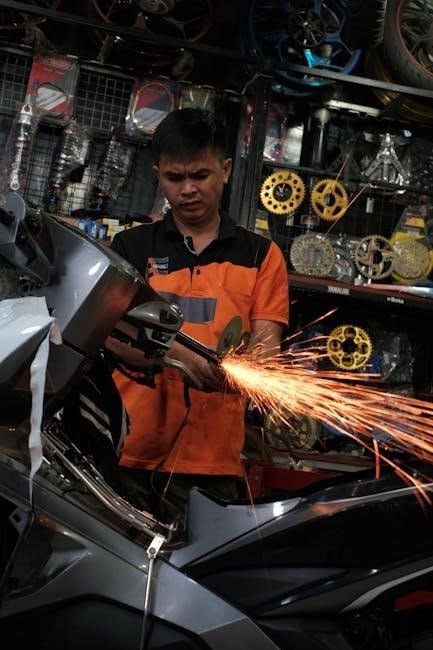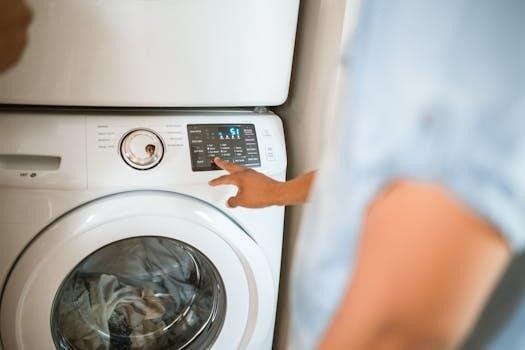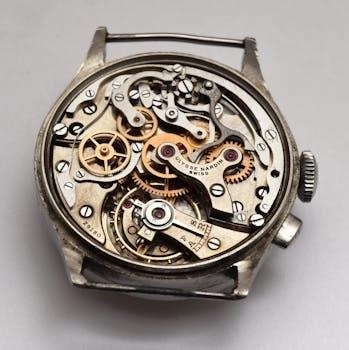Ridgid Shop Vac User Manual: A Comprehensive Guide
This comprehensive guide provides essential information for operating and maintaining your Ridgid shop vac. It covers safety instructions, operational guidelines, maintenance procedures, and troubleshooting tips to ensure optimal performance and longevity. Learn how to use it effectively!
Understanding Your Ridgid Shop Vac
Before operating your Ridgid shop vac, it’s crucial to understand its features and intended use. These versatile machines are designed for both wet and dry vacuuming, and some models can even be used as blowers. Familiarize yourself with the components, including the hose, filters, and power switch.
Knowing your model’s specific capabilities will help you use it safely and efficiently. Read the owner’s manual carefully to learn about any unique features or limitations. Pay attention to warnings and safety precautions to prevent accidents or damage to the unit. Proper understanding ensures optimal performance and prolongs the life of your shop vac.
Safety Instructions
Prioritize safety when operating your Ridgid shop vac. Always read and understand all safety warnings and instructions in the manual. Following these guidelines minimizes the risk of injury, electric shock, or fire hazards.
Important Safety Warnings
Before operating your Ridgid shop vac, carefully review these critical safety warnings to prevent accidents and ensure safe usage. This wet/dry vac is designed with user safety in mind, but precautions are necessary. Ensure the vacuum is double-insulated, eliminating grounding needs.
Avoid using damaged extension cords and always inspect for wear before each use. Never vacuum flammable liquids or materials that could cause an explosion. Do not put any object into ventilation openings; keep hair, loose clothing, fingers, and all parts of body away from openings and moving parts.
Always disconnect the vacuum cleaner before performing maintenance or changing filters. Failure to adhere to these warnings could result in serious injury or property damage.
Double-Insulated System
Your Ridgid shop vac features a double-insulated design, enhancing user safety by eliminating the need for a separate grounding system. This design incorporates two layers of insulation, protecting against electrical shock. Using only identical replacement parts ensures the integrity of the double insulation.
When servicing, always follow instructions specifically for double-insulated appliances. Never remove or bypass the double insulation. Inspect the cord regularly for damage and replace it if necessary. Double insulation provides an added layer of safety, but it is crucial to follow all safety precautions outlined in the manual. This feature enhances user protection during operation. Maintaining the integrity of this system is paramount.

Operation
This section details the proper operation of your Ridgid shop vac. It covers intended use, safe handling, and utilizing the blower function. Refer to this section for optimal performance and safety guidelines.
Intended Use
Your Ridgid Wet/Dry Vac is designed for household use, effectively vacuuming both wet and dry materials. Its versatile functionality extends to use as a blower for clearing debris. This tool is double-insulated, eliminating the need for a grounding system, ensuring safety during operation. Always use identical replacement parts when servicing. Before operating, carefully read and understand the manual and all labels on the vac, to get better stability and mobility. It helps to transfer images using wax paper with this easy step-by-step tutorial, which can help understand how the parts go together. This guide will provide the best experience and ensure your safety.
Using as a Blower
Your Ridgid shop vac can be used as a blower for clearing leaves, debris, and dust from various surfaces. To use this function, attach the hose to the blower port, typically located on the rear of the unit. Ensure the hose is securely connected to prevent accidental detachment during operation. When blowing, always wear safety glasses to protect your eyes from flying particles. Direct the airflow away from people, animals, and fragile objects. Be mindful of your surroundings and avoid blowing debris into areas where it could cause damage or create a hazard. Maintain a firm grip on the hose.
Maintenance
Regular maintenance is crucial for the longevity of your Ridgid shop vac. This section covers filter cleaning, part replacements, and general upkeep to keep your vacuum operating at peak performance for years to come.
Filter Cleaning Mechanism
Maintaining a clean filter is vital for optimal suction and performance of your Ridgid shop vac. Many Ridgid models feature a built-in filter cleaning mechanism, simplifying this crucial task. This mechanism often involves a semi-automatic process, allowing you to clean the filter without removing it from the vacuum. Regular use of this feature helps prevent clogging and maintains consistent airflow.
Consult your specific model’s manual for detailed instructions on activating and utilizing the filter cleaning mechanism. Proper maintenance ensures that your Ridgid shop vac operates efficiently and effectively for an extended period, and reduces the frequency of filter replacements.
Replacing Parts
Over time, certain components of your Ridgid shop vac may require replacement due to wear and tear. It’s crucial to use only genuine Ridgid replacement parts to ensure proper fit and optimal performance. Consult your user manual to identify the correct part number for your specific model.
Common replacement parts include filters, hoses, nozzles, and casters. When replacing parts, always disconnect the shop vac from the power source for safety. Refer to the manual for detailed instructions on how to safely and effectively replace each component. Using non-genuine parts may void the warranty and compromise the vacuum’s functionality and safety.

Troubleshooting
Experiencing issues with your Ridgid shop vac? This section offers solutions to common problems. Find answers regarding performance, motor issues, filter problems, and more to keep your vacuum running smoothly, and efficiently.
Finding Answers in the Manual
If you’re encountering issues with your Ridgid shop vac, the user manual is your first and best resource.
Begin by consulting the troubleshooting section, which addresses common problems and their solutions. Look for symptoms
that match your vac’s behavior, like reduced suction or unusual noises. If you can’t find a direct answer, try using the
manual’s index to search for relevant keywords related to your issue.
Remember to read related sections, such as filter maintenance or motor care, as these may indirectly offer insights. If
the manual doesn’t provide a solution, consider checking online forums or contacting Ridgid customer support for
further assistance.
Specific Models
This section details specific Ridgid shop vac models, offering unique features and instructions. Refer to your model number for accurate information regarding operation, maintenance, and compatible accessories and filters for optimal performance.
Ridgid HD14000
The Ridgid HD14000 is a 14-gallon wet/dry vac designed for both household and job site use. Before operating, carefully review the owner’s manual for important safety instructions to prevent injury, electric shock, or fire. This model is compatible with 2-1/4 OD outer diameter shop-vac hoses.
The HD14000 features a patented Qwik Lock Filter system, simplifying filter installation and removal. For optimal performance, use Ridgid shop vac filters (VF4000, VF5000, VF6000, VF7000, VF8000, sold separately) to maintain suction power and extend the vac’s lifespan. This model is crafted to fit with multiple brands.
Ridgid WD40700 Series (WD40701, WD4070EX1, WD4071M1)
The Ridgid WD40700 series encompasses models WD40701, WD4070EX1, and WD4071M1, all being 4 U.S. gallon (15 Liter) wet/dry vacuums. These models are user-friendly, featuring intuitive controls and an ergonomic design. Each boasts a built-in filter cleaning mechanism, simplifying maintenance.
These vacuums are designed for effective cleaning in various settings, offering reliable performance. Before use, consult the owner’s manual for proper operation and safety guidelines. The WD40701 manual is readily available online in PDF format. Always ensure you understand the intended use and safety precautions before operating any model in this series.
Ridgid HD18000
The Ridgid HD18000 is a dependable and efficient vacuum cleaner designed for effective cleaning across various surfaces. It offers a user-friendly experience with intuitive controls and an ergonomic design. Its lightweight and portable nature makes it easy to move around the house, and it’s built to last.
While the specifics of the HD18000 are not extensively detailed in the provided snippets, the general consensus points to a vacuum cleaner designed for hassle-free operation. For detailed instructions, always consult the Ridgid HD18000 owner’s manual; If you are facing any issues that the manual doesn’t address, contact Ridgid support for assistance.

Warranty Information
Shop-Vac offers a Limited Lifetime Home Use Warranty applicable only to the original purchaser and is nontransferable. Refer to your manual for complete warranty details and coverage specifics.
Shop-Vac Limited Lifetime Home Use Warranty
The Shop-Vac Limited Lifetime Home Use Warranty provides assurance to the original purchaser regarding the durability and reliability of their shop vacuum. This warranty safeguards against defects in materials and workmanship under normal household use. It is essential to understand that this warranty is specifically for home use and is not transferable to subsequent owners. To take advantage of the warranty, proper documentation, such as proof of purchase, is typically required. Always consult the complete warranty terms and conditions outlined in the user manual for specific details, limitations, and claim procedures. Remember to register your product!

Accessories and Filters
Explore the range of accessories and filters available for your Ridgid shop vac. These components enhance its versatility and performance, ensuring effective cleaning for various tasks. Select the right filter!
Filter Compatibility (VF4000, VF5000, VF6000, VF7000, VF8000)
Understanding filter compatibility is crucial for maintaining your Ridgid shop vac’s performance. The VF4000, VF5000, VF6000, VF7000, and VF8000 filters are designed for specific models and applications. Using the correct filter ensures optimal filtration and prevents damage to the vacuum. Refer to your manual to determine the appropriate filter for your Ridgid shop vac model. Proper filter maintenance, including regular cleaning or replacement, will extend the life of your vacuum and maintain its suction power. Always consult your shop vac manual for compatibility details.



































